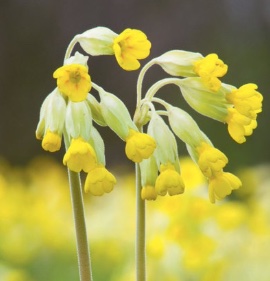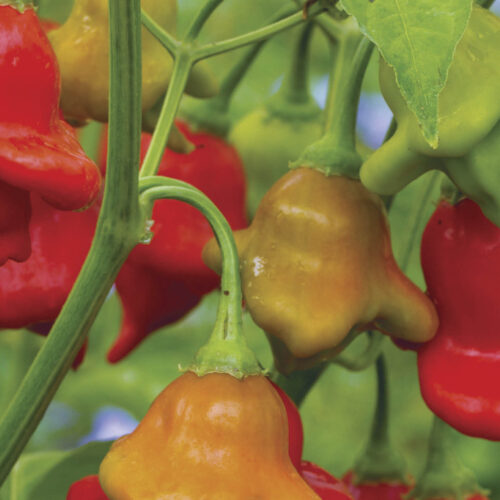Herbs to grow and savour
2022-08-22T03:23:58+10:00
Karen Sutherland suggests some perennial herbs that are strong on colour and flavour, including hyssop and French tarragon.
Growing herbs can be done all year round, but the warmer months are an opportunity to look for flavourfilled options to plant. Here’s four to try:
Hyssop (pictured above)
Hyssop officinalis
- Height 30cm
- Width 60cm
- Sun/Shade Full sun/part shade
- Time to plant/harvest Plant spring, harvest all year round
CLIMATE ZONE: Subtropical Arid/semi-arid Warm temperate Cold temperate
A shrub-like herbaceous perennial with vivid blue flowers attracting bees and butterflies, hyssop is a great companion plant.
Somewhat short-lived and with brittle branches, plants benefit from being pruned by half in autumn to promote bushy growth in spring. Propagate by tip cuttings in spring or from seed. As a Mediterranean plant, hyssop is reasonably drought tolerant and needs well-drained soils.
Too bitter tasting to be a daily tea, hyssop is a strong medicinal herb that should not be consumed regularly, but is very useful for respiratory issues associated with the common cold. Add fresh flowers to salads or use leaves sparingly in cooking especially with fatty foods.
NOTE: Pregnant women should avoid hyssop.
French tarragon
Artemisia dranunculus
- Height 40cm
- Width 50cm
- Sun/Shade Morning sun/part shade
- Time to plant/harvest Plant spring, harvest spring/autumn, dies down in winter
CLIMATE ZONE: Arid/semi-arid Warm temperate Cold temperate

As spring unfolds, fragrant perennial herbs such as French tarragon emerge from winter rest. Once you’ve tasted freshly picked tarragon cooked simply with mushrooms, you’ll wonder why you’ve not grown it before. The aniseed flavour of tarragon also pairs well with chicken and this herb makes a wonderful herb vinegar.
French tarragon prefers morning sun, well-drained rich soil, regular watering and grows well in a pot. In early autumn, harvest some tarragon sprigs to dry for the kitchen, before leaves die down for winter. Once plants start to produce new shoots in spring, feed with some pelletised manure and a liquid seaweed feed. Tarragon plants benefit from being divided every three years.
Cowslips
Primula veris
- Height 25cm
- Width 25cm
- Sun/Shade Morning sun/partial or full shade
- Time to plant/harvest Plant autumn to spring, harvest flowers in spring
CLIMATE ZONE: Arid/semi-arid Warm temperate Cold temperate

A plant best suited to cold-climate gardens, cowslips are herbaceous perennials, producing their delicate and usually yellow flowers early spring each year once established.
Cowslips are more effective planted in clumps or drifts, where their small flowers have more impact. They also make lovely potted specimens while flowering. Plants are hardier than the more commonly grown primrose, liking an open sunny position but also doing well in shade. This plant has been awarded the Royal Horticultural Society’s Award of Garden Merit, indicating this is a plant well worth trying.
Leaves and flowers are edible and are often foraged to add to salads in their native England and Spain. Cowslip flowers are used to make a wine in the English countryside.
English voilet (sweet violet)
Viola odorata
- Height 20cm
- Width 20cm
- Sun/Shade Full sun/part shade
- Time to plant/harvest Plant all year round, harvest flowers from winter to early spring
CLIMATE ZONE: Subtropical Arid/semi-arid Warm temperate Cold temperate

Old-fashioned English violet plants are often disdained as they can become weedy, especially in cool, wet climates. Even in suburban gardens far from bushland, it’s important to prevent it taking over by pulling out new seedlings annually.
Use English violet plants to edge garden beds or as a groundcover under deciduous trees. As leaves fall, plants start producing their sweetly scented, violet flowers and do so until spring.
Pick violet flowers for tiny posies; use them fresh or crystallised to decorate cakes; or make a tea for a lymph-system boost with five flowers in a cup of hot water. Flowers and young leaves can be added to salads.
Karen Sutherland writes regularly for OG, sharing her knowledge and experience. You can follow her on instagram: @edibleedendesign.
This article first appeared in our Spring 2018 issue. For more ideas about what to plant in spring see our Early Spring 2022 issue (OG 135), available at our website.







